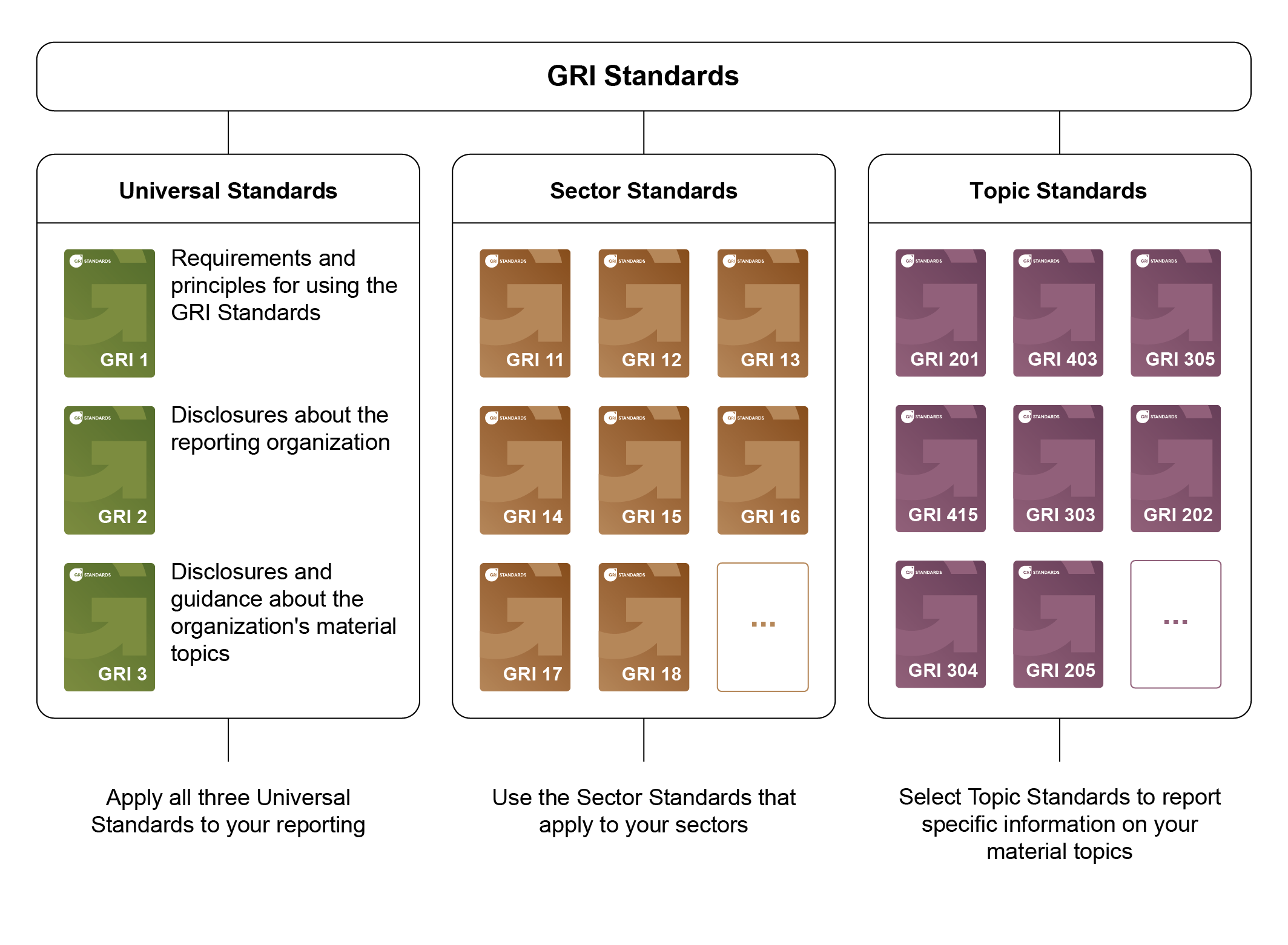ESG Reporting & Carbon Footprint
What is ESG report
An ESG report, also known as a Sustainable report, is published by organizations to report on their environmental, social, and governance impacts.
The environmental section is required to consider factors such as carbon footprint, waste, and wastewater, among others.
The social section should include considerations for occupational health and safety, hiring practices, and supporting the local community.
The governance section is also required to consider elements such as good business practices, corruption control, and business risk management.
These reports help organizations be transparent about their activities, describing how they handle risks and opportunities. They also serve as communication tools for the organization.
Why we need to report the ESG report
According to Thailand regulations updated on 08/12/2023, only public companies are required to report their ESG information. This requirement aims to ensure that investors can access ESG information before investing in each public company. Additionally, this mandate has an impact on companies at other levels, raising awareness and necessitating preparation for ESG reporting and compliance with future climate change regulations.
Organizations key benefit on reporting ESG:
1. Investor, Stakeholder, and Interested Parties’ Interest: ESG has become a prevailing trend, with investors actively seeking companies capable of effectively managing risks and seizing opportunities that impact their business. An ESG report serves as a tangible demonstration that your organization has adeptly navigated these global trends.
2. Compliance: ESG considerations are intricately tied to existing regulations and are expected to face even stricter requirements in the future. An ESG report provides valuable insights into your organization’s compliance efforts, ensuring due consideration of all relevant regulations.
3. Environmental Protection: Given the pressing global challenges, an ESG report acts as a window into how your organization addresses environmental concerns.
4. Innovation to Support Risks and Opportunities: ESG reports empower organizations to proactively identify and address risks and opportunities within their business, prompting innovative solutions.
5. Partnerships and Collaborations: ESG issues open doors to valuable partnerships and collaborations, fostering increased investment solutions and the adoption of cutting-edge technologies.
6. More Sustainable Work Environment: Aligned with UN SDGs, ESG reports contribute to creating a healthier and more sustainable work environment, delivering long-term benefits for employees.
7. Marketing: ESG reports serve not only as a compliance tool but also as effective marketing tools, showcasing your business’s distinctive strengths.
8. Trade Barrier in the Global Market and Transparency: For exporters, ESG reports streamline compliance with international standards, providing assurance that your organization is well-prepared for global transparency initiatives.
How to report ESG
Check the requirement and setup your target
When organizations want to report their ESG, they first look for the standards or requirements that need to be complied with in order to prepare their report. This could include the following details:
– GRI (Global Reporting Initiative)
– SASB (Sustainability Accounting Standards Board)
– UN SDG (United Nations Sustainable Development Goals)
– GHG Protocol (Greenhouse Gas Protocol)
– SBTi (Science Based Targets Initiative)
The most widely used standards are the GRI standards, which include other main standards such as UN SDG to comply with global trend targets, GHG protocol to report greenhouse gas calculations, and SBTi to report emission reduction targets and results.
Setup responsible team
According to the ESG framework, the main focus is on three key sections: E (Environment), S (Social), and G (Governance). This leads to various related factors and information that will need to be included in this report’s activities.
Setup organization's reporting scope
Set up the organizational scope for reporting on ESG. This important step requires analyzing the organization’s business boundaries or the structure that your organization intends to report.
Prepare information check compliance of interested parties requirements
Evaluate the compliance needed for your organization, including local regulations and requirements from interested parties, as well as trends in business requirements.
The results of the compliance evaluation will be used to identify the evidence required for compliance, such as reports needed for public companies, carbon footprint reports for tax purposes, and industrial zone reporting requirements.
Report, followup, Continual improvement
Report the activities that your organization has completed or fulfilled by using the GRI report structure, UN SDG target setup or fulfillment, SBTi carbon footprint target reduction, etc.
What is GRI (Global Reporting Initiative)
The GRI Standards is a modular system of interconnected standards, which divided into 3 series of standards support the reporting process:
– The GRI Universal Standards
– GRI Sector Standards
– GRI Topic Standards
 Using these Standards to determine what topic are material (relevant) helps organizations to achieve sustainable development.
Using these Standards to determine what topic are material (relevant) helps organizations to achieve sustainable development.
What is UN SDG

The Sustainable Development Goals are a universal call to action to end poverty, protect the planet and improve the lives and prospects of everyone, everywhere. The 17 Goals were adopted by all UN Member States in 2015, as part of the 2030 Agenda for Sustainable Development which set out a 15-year plan to achieve the Goals.
What is Carbon footprint
A carbon footprint is the total amount of greenhouse gases, specifically carbon dioxide and other carbon compounds, that are emitted/removed directly or indirectly by an individual, organization, event, or product throughout its lifecycle. Greenhouse gases are responsible for trapping heat in the Earth’s atmosphere, contributing to global warming and climate change.
The GHG Protocol, or Greenhouse Gas Protocol, is a widely recognized and widely used standard for accounting and reporting greenhouse gas (GHG) emissions. It provides a comprehensive framework for organizations to measure and manage their greenhouse gas emissions from both direct and indirect sources.
GHG Protocol provide many widely recognized standards and guidance such as:
– Corporate Standard
– Corporate Value Chain (Scope3) Standard
– Project Protocol
– Product Standard
– Scope2 Guidance
– Scope3 Calculation Guidance
***This standard is the foundation of how private parties should calculate their carbon footprint. It also provides the reference formulation, data, and instructions on how the calculation should be performed for each major activity.
ISO14064-1 provide details principles and requirements for designing, developing, managing and reporting organization-level GHG inventories. It includes requirements for determining GHG emission and removal boundaries, quantifying an organization’s GHG emissions and removals, and identifying specific company actions or activities aimed at improving GHG management.
It also includes requirements and guidance on inventory quality management, reporting, internal auditing and the organization’s responsibilities in verification activities.
***The difference between the GHG Protocol and ISO 14064-1 can be observed in scope 3 indirect emissions.
TGO - CFO
The Thailand Greenhouse Gas Management Organization (Public Organization) or TGO has developed the CFO quantification guidelines for those Thai companies that intend to quantify and certify their CFO under the TGO’s CFO scheme. These guidelines were developed in accordance with ISO 14064-1, Greenhouse gases – Part 1: Specification with guidance at the organization level for quantification and reporting of greenhouse gas emissions and removals.
***TGO has initiated a third party verification system in accordance with ISO 14065. The CFO verification shall be conducted by eligible legal entities accredited by an accreditation system conforming to and recognized by the International Accreditation Forum or the Thai National accreditation body, the National Standardization Council of Thailand.
CDM, VCS VERRA, The Gold standards, IREC (Carbon credit international level)
The Clean Development Mechanism (CDM), VCS (Verified Carbon Standard) by VERRA, The Gold Standard, and IREC are widely-used international standards schemes with the objective of guiding implementers to comply with project emission/removal requirements.
If the project successfully undergoes validation/verification, the private organization will earn carbon credits based on the quantity reported in the validation/verification report. Subsequently, the organization can use these carbon credits for offsetting or trading, depending on its objectives.
ISO14064-2 Specification with guidance at the project level for quantification, monitoring and reporting of greenhouse gas emission reductions or removal enhancements.
This standard specifies principles and requirements and provides guidance at the project level for the quantification, monitoring and reporting of activities intended to cause greenhouse gas (GHG) emission reductions or removal enhancements. It includes requirements for planning a GHG project, identifying and selecting GHG sources, sinks and reservoirs (SSRs) relevant to the project and baseline scenario, monitoring, quantifying, documenting and reporting GHG project performance and managing data quality.
TGO - TVER / PREMIUM TVER
T-VER is Thailand Voluntary Emission Reduction Program. It is the GHG emission reduction program, developed by Thailand Greenhouse Gas Management Organization (TGO) to promote and support all sectors to voluntarily participate in GHG emission reduction program and can sell the reduction unit or carbon credit, which called “TVER” under this T-VER program, under voluntary domestic market. In this regard, TGO has prescribed rules and procedures for project development, GHG emission reduction methodology, and certification of emission reduction credit. All projects participated in T-VER program must reduce GHG emission/result in carbon sequestration within Thailand’s jurisdiction.
Premium T-VER project shall be an activity that is situated in Thailand and can measure real, permanent, and additional greenhouse gas reduction without double counting, contribute to sustainable development, and has a measure in place to prevent negative impacts (safeguards) and does not cause negative impacts (do-no-net harm) according to guidelines prescribed by the Board of Directors.
The amount of GHG emission reduced or removed from the operation of the Premium T-VER project approved by TGO call “Carbon credits” can be used for exchange or trading. Its unit is “ton carbon dioxide equivalent (tCO2eq)”.
ISO14067 Greenhouse gases Carbon footprint of products Requirements and guidelines for quantification.
This document specifies principles, requirements and guidelines for the quantification and reporting of the carbon footprint of a product (CFP), in a manner consistent with International Standards on life cycle assessment (LCA) (ISO 14040 and ISO 14044).
The CFP (Carbon footprint of products) will be used as products carbon footprint in the future and also use for CBAM for export organization to EU.
ISO14064-3 Specification with guidance for the verification and validation of greenhouse gas statements.
This document specifies principles and requirements and provides guidance for verifying and validating greenhouse gas (GHG) statements.
It is applicable to organization, project and product GHG statements.
***If you want to operate a accredited validation/verification bodies, this is one of the standards that you are required to fulfill.
ISO17029 Conformity assessment General principles and requirements for validation and verification bodies.
This standard contains general principles and requirements for the competence, consistent operation and impartiality of bodies performing validation/verification as conformity assessment activities.
Bodies operating according to this standard can provide validation/verification as a first-party, second-party or third-party activity. Bodies can be validation bodies only, verification bodies only, or provide both activities.
This standard is applicable to validation/verification bodies in any sector, providing confirmation that claims are either plausible with regards to the intended future use (validation) or truthfully stated (verification). However, results of other conformity assessment activities (e.g. testing, inspection and certification) are not considered to be subject to validation/verification according to this document. Neither are situations where validation/verification activities are performed as steps within another conformity assessment process.
***If you want to operate a accredited validation/verification bodies, this is one of the standards that you are required to fulfill.
ISO14066 Environmental information Competence requirements for teams validating and verifying environmental information.
This document is applicable to all organizations that plan and conduct external or internal validations, verifications and agreed-upon procedures (AUP).
***If you want to operate a accredited validation/verification bodies, this is one of the standards that you are required to fulfill.
ISO14065 General principles and requirements for bodies validating and verifying environmental information.
This document specifies principles and requirements for bodies performing validation and verification of environmental information statements.
***If you want to operate a accredited validation/verification bodies, this is one of the standards that you are required to fulfill.
